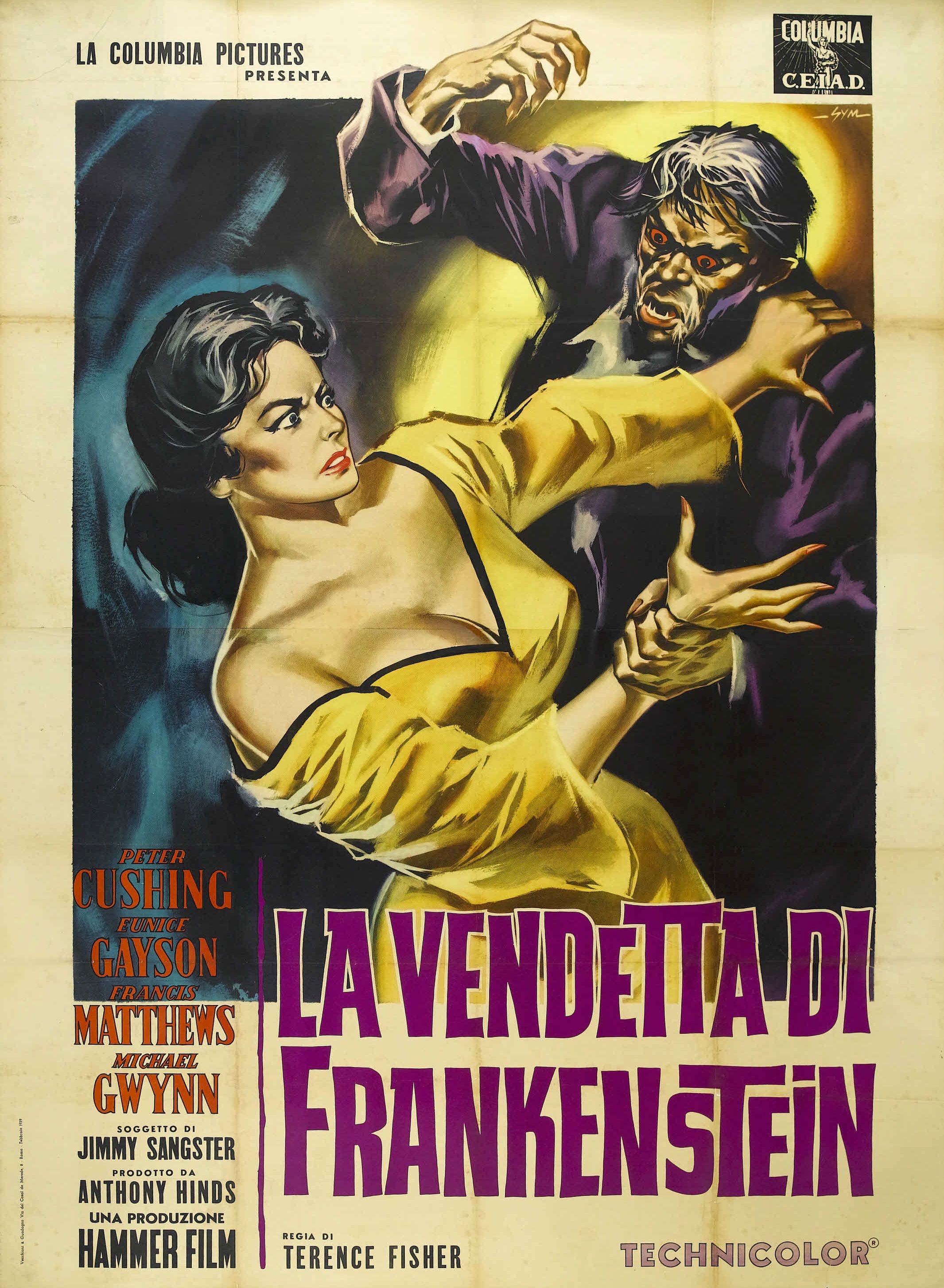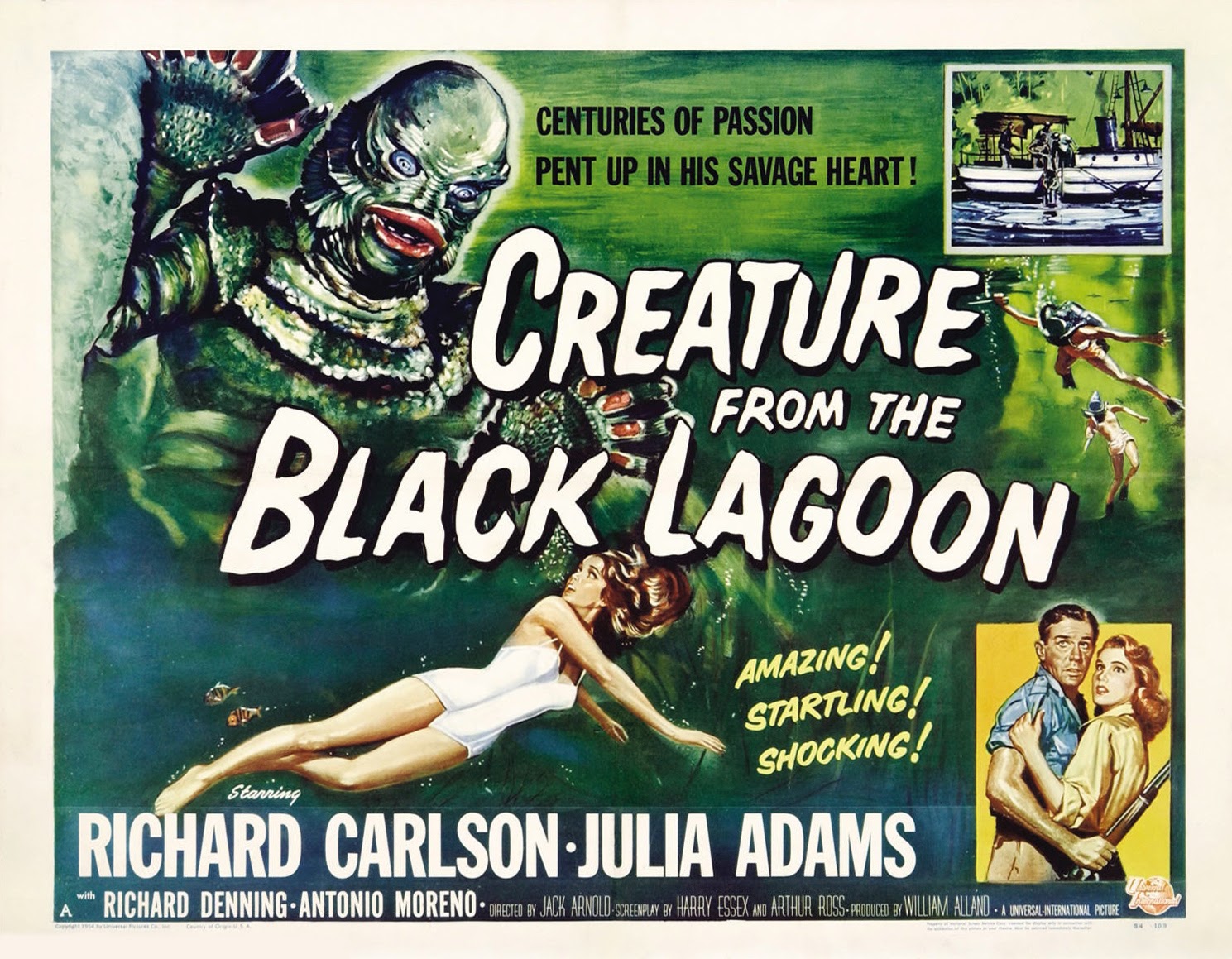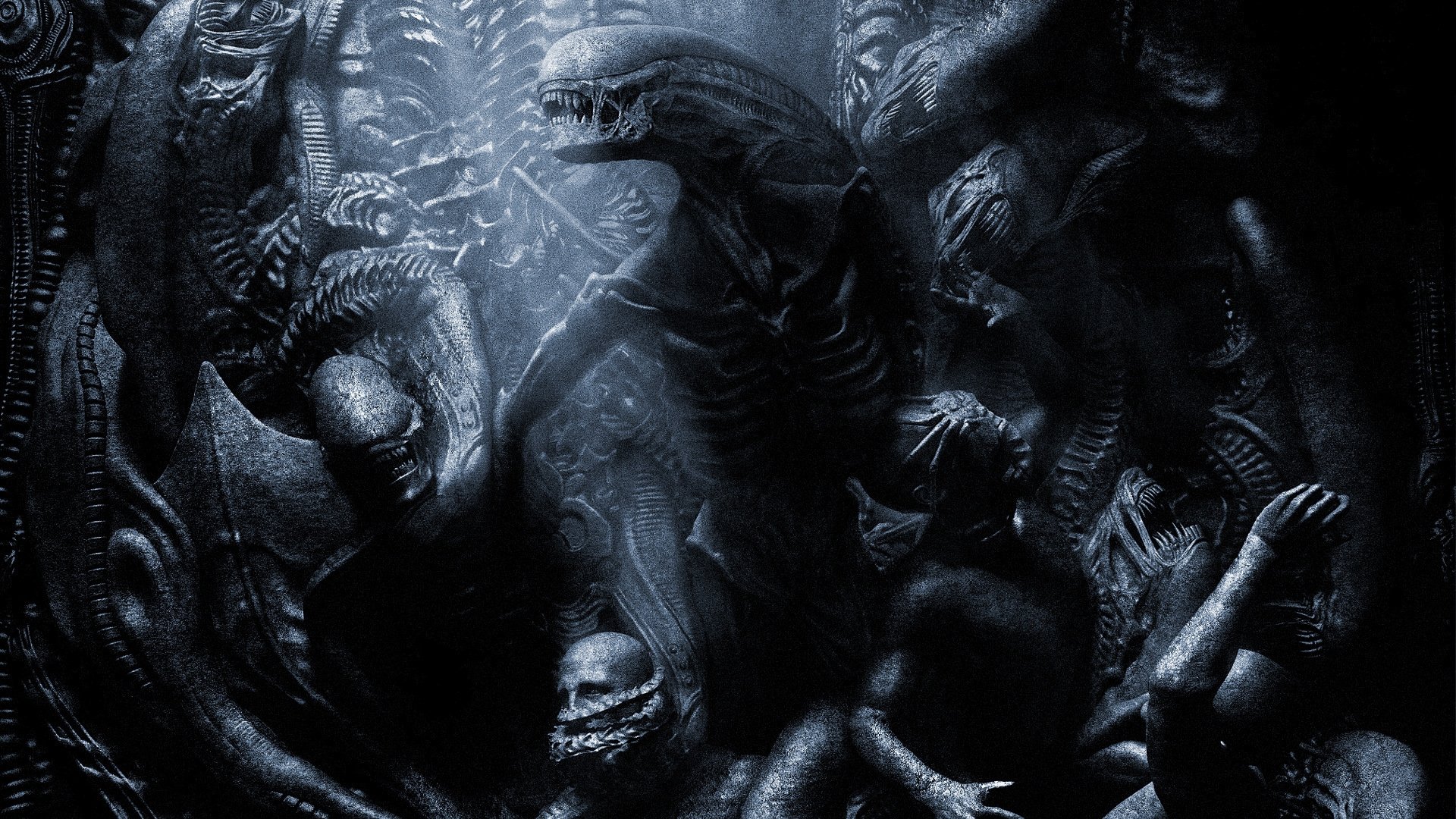People say you shouldn’t judge a book by its cover, but we all know that the sci-fi horror illustrations displayed at the front of the theater is what initially draws your attention to watch the movie. Art takes various forms; and movie posters just are among the most effective mediums as they always tease you for more. In every movie production, a reasonable amount of the time and budget goes to designing the poster. A movie needs to deliver just the right “first impression” from the poster to turn your curiosity into profit. Each poster is a complex work of art; with sci-fi horror, it must be a vibrant illustration, filled with imagination and mystery to evoke terror and awe at the same time. Now, let’s revisit some of the most iconic sci-fi horror movie posters ever. Mind you, we’re not talking about the movies themselves, but only the poster arts meant to represent them.
The Brain Eaters (1958)

You’ve probably never heard of the movie, but it’s alright because it’s not noteworthy, anyway. But the poster is different. It’s an indie, black & white film, featuring a brief appearance of Leonard Nimoy, although the film did actually misspell the name in the credits. Enough about it – now to the poster. The first thing you’ll notice, apart from the massive depiction of an exposed brain that emits lights in various directions, is the unnecessarily long tagline: “Crawling, slimy things terror-bent on destroying the world!” It might not be the most visually appealing posters, but it gets the job done. You get a depiction of big yellow eyes without their pupils, sharp teeth, and people with guns running around in chaos. This is a fine example of how sci-fi horror art begs the question, “What is happening?”
The Revenge of Frankenstein (1958)

Our second example of sci-fi horror art is the Italian poster for “The Revenge of Frankenstein” released also in 1958. Compared to its English counterparts, the Italian version is simply much more vibrant with contrasting colors to showcase the menace of a monster capturing a bewildered damsel in distress. It’s an artwork that sells, presenting you with a visualization that grabs your attention and encourages you to figure out the story behind the image. One thing to notice here is that the poster actually tells a small portion of the story well. There’s a monster in the shape of a man with bright red eyes and pointy nails, overpowering a seemingly ordinary woman. Also, the monster is wearing a purple suit, while the woman is in a bright yellow dress. Again, “What is going on?” you may ask. You should find the answer by watching the film, and you must pay for it. The poster acts like a teaser, although it does that without forgetting to pique your curiosity. Sometimes, an effective sci-fi horror art doesn’t have to be sophisticated at all.
Creature from the Black Lagoon (1954)

The history of sci-fi horror doesn’t exist without mentioning Creature from the Black Lagoon. Besides being a great, memorable film for all generations to remember, its poster is nothing short of spectacular. It was designed by Reynold Brown – a highly prolific artist at the time and the one responsible for “House of Haunted Hill” as well – highlighting the fully rendered Gill-man in all his glory with fins, scales, and those strange eyes. The poster does include everything that matters to tell a story by itself: an underwater expedition, a boat on a lagoon, a monster, and of course, the typical damsel in distress. It has a lot going on, but everything is on point without being a spoiler.
Alien: Covenant

Speaking of having a lot of things going on, let’s jump right ahead from the 1950s to 2017 when Alien: Covenant just came out. This is where you can see the comparison between old-school movie posters (probably drawn by hand with little help from technology) and a full-scale modern sci-fi horror art, likely designed and created using computers. Technicalities aside, the poster for Alien: Covenant has loads of Xenomorphs, humans, and nondescript objects mashed into a single big pile to create the sense of imminent chaos, deaths, and terrors. While the film itself received mixed reviews, the poster is excellent in so many ways. It evokes horror, mystery, curiosity, nightmarish visions, and claustrophobic feelings.
We think one key to effective sci-fi horror art is to lead the viewers to imagine the worst thing that can happen. Nothing is more terrifying than our own imagination, so what you leave out of the picture has all the potential to be much more frightening than what’s explicitly presented. Take the poster art for the original Alien, for example; there’s nothing particularly disturbing about it, except perhaps the hovering egg with green lights coming out of it. Beneath the egg, you get a floor of some sort that appears to be made of bonelike materials. The real punch, however, lies in its tagline, “In space no one can hear you scream” and suddenly you feel you need to know the full story.
Do you think movie posters can be categorized as arts? Can you name some “modern” examples of sci-fi horror art? We’d love to hear from you.
Other Things You Might Want to Know
Why is Alien: Covenant seen as a failure?
We wouldn’t say that it’s an outright failure. Critical reception is pretty decent, with around 65% on Rotten Tomatoes and a 55% audience score. On IMDb, the film achieved a point of 6.4, which wasn’t entirely bad at all. Admittedly, there are indeed some poor plot choices and simple conveniences that may cheapen the thrill, but as a whole, Alien: Covenant is miles better than all the mediocre sci-fi horror films out there. Also, Ridley Scott delivered enough disturbing vibe and creepiness to keep us watching till the very end.
How many Alien movies are directed by Ridley Scott?
The original Alien (1979), along with the prequel series: Prometheus (2012) and Alien: Covenant (2017).
What is the Hammer’s Frankenstein?
The term refers to a Frankenstein film series produced by Hammer Film Production. The series includes:
The Curse of Frankenstein (1957)
- The Revenge of Frankenstein (1958)
- The Evil of Frankenstein (1964)
- Frankenstein Created Woman (1967)
- Frankenstein Must Be Destroyed (1969)
- The Horror of Frankenstein (1970)
- Frankenstein and the Monster from Hell (1974)
Check out other articles by month:







